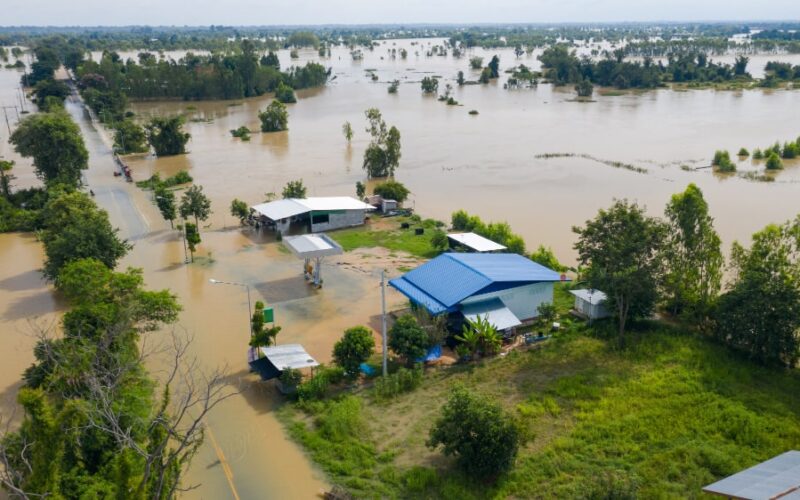Japan is an island country that is entirely surrounded by water. As a result, natural calamities frequently cause tsunamis, which have a significant influence on our daily lives. Because tsunamis are a natural occurrence, we are unable to stop them. So, is there a method to stop damage from spreading when a tsunami strikes?
Why do tsunamis occur?
A tsunami is a phenomenon whereby different catastrophes produce enormous waves. Tsunamis are brought on by the vertical movement of water masses caused by the seafloor. The enormous wave will appear repeatedly when a tsunami strikes. They come in different sizes as well, sometimes starting off loud and increasing in size as they progress. What first triggers tsunamis? According to the Indian Ocean Tsunami Information Centre (2020), the causes are as follows:
・Earthquakes
Earthquakes occur when plates slip, subduct, or spread. Earthquakes often cause tsunamis, but this is not always the case. There are four conditions when a tsunami is generated by an earthquake.
○When the epicenter is on the seabed and some material slides into the sea
- When the magnitude is 6.5 or more and occurs in a shallow location (Within 70 km from the surface).
- When the seafloor begins to move vertically due to an earthquake
・Landslide
When a landslide occurs near the sea, a lot of water flows into the sea, causing a tsunami. The same is true if this phenomenon occurs in the ocean. Landslides intensify the movement of material, which pushes water out, leading to tsunamis.
・Volcanic eruptions
Although less likely, volcanic eruptions can also produce tsunamis. The explosion destroys the slopes and magma chambers, causing the water on the sea surface to move, causing a tsunami.
What kind of damage can be expected from a tsunami?
According to Andrew McDonald (2017), the damage caused by a tsunami can be broadly divided into two types: human impact and environmental impact.
・Human impact
Some people are caught in the tsunami and lose their lives. However, the impact of a tsunami on us is not limited to that. The tsunami will destroy many buildings and even sewage systems. As a result, even after the tsunami subsides, the bodies of those who died in the tsunami remain, and in some cases, they are left to decompose. Living in polluted water and air can also cause illness. In addition, the tsunami damage has a great impact on the mind, and some people suffer from mental illness due to mental and physical stress. A tsunami can have a negative impact on our minds and bodies.
・Environmental impact
A tsunami destroys the environment in which we live. This applies to both land and sea. The tsunami kills or saps the energy from plants and animals. Sand and stones also shift, altering the coastline’s shape. Moving sand and stones can hurt living things, while tsunamis can carry debris and hazardous materials, polluting the ecosystem. We must exercise caution because if the environment worsens, our lives will alter and humans will be impacted.
How do we protect ourselves from a tsunami?
Here’s how we can protect ourselves from the devastating effects of tsunamis, according to Sylvester (2020):
・Always be prepared for a tsunami.
We should always prepare an emergency bag so that it will not be a problem when a tsunami comes. In addition to water, food, and clothing, you should also have a first aid kit ready in case of an emergency, such as an injury or illness. In order to escape from the tsunami as soon as possible, it is important to minimize the contents of our bags and lighten our luggage.
・Escape to higher ground.
After strong earthquakes, tsunamis can occur quickly. Therefore, we can protect ourselves by evacuating to a higher place as soon as possible. Furthermore, a tsunami may not be contained in a single tsunami. So, after escaping to higher ground, it is necessary to wait there for a while.
・Listen to news and updates.
It is important to always take in the latest information and pay attention to that information. In particular, we must be more vigilant when it comes to the words “it’s okay in the event of a disaster” and judge whether they’re really right.
・Check the terrain and hazard areas.
It is important to understand the topography of the land and confirm which places are dangerous while talking with the people around us.
Conclusion
It is difficult to stop a tsunami from occurring when a calamity strikes. However, there are numerous strategies to react to tsunamis. Since natural disasters are unexpected, it is crucial that we constantly be ready to protect ourselves from them and that we notify and act accordingly with those in our immediate vicinity.
References
Indian Ocean Tsunami Information Centre (2020). What Causes Tsunami. [online] IOTIC. Available at: <https://iotic.ioc-unesco.org/what-causes-tsunami/> [Accessed 8 June 2023].
McDonald, A. (2017). What Happens After a Tsunami Occurs? [online] Sciencing. Available at: <https://sciencing.com/happens-after-tsunami-occurs-12327561.html> [Accessed 11 June 2023].
Sylvester, P. (2020). 6 Things You Do If a Tsunami Is Coming. [online] www.worldnomads.com. Available at: <https://www.worldnomads.com/travel-safety/worldwide/how-to-survive-a-tsunami> [Accessed 11 June 2023].
